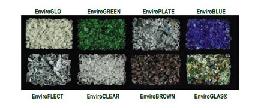
With the world increasingly prioritizing sustainability and the ethical use of technology, many companies in the tech industry seek performant solutions that also align with an eco-friendly disposition. As digital systems grow and the energy use and subsequent carbon emissions of these systems grow more complex, sustainable technology companies discover that a headless CMS for digital systems is the most sustainable and efficient option going forward.
Reducing Digital Waste through Modular Architecture
There is a particular sustainability advantage of headless CMS platforms due to their modular, API-based architecture. Whereas traditional CMS platforms are monolithic and require a lot of resources because of the all-in-one design, headless technology separates the content management software from the front-end display. Using features like Next.js Preview mode can further optimize this setup by allowing teams to preview and refine content efficiently before deployment, minimizing wasted resources and unnecessary updates. Thus, sustainable technology companies can function on a more streamlined setup since they only have to depend on the services they need without extra frills, which helps reduce unnecessary data storage and processing requirements, energy consumption, and ultimately, virtual waste.
Enhanced Efficiency through Cloud-Native Infrastructure
Of course, the headless CMS solutions are cloud-based. Eco-friendly tech companies can easily deploy headless CMS software to create and maintain content in a cloud-based, scalable environment. For instance, cloud solutions optimize real-time resource use, automatically scaling resources up and down as needed. This feature reduces energy consumption when excess resources and sleeping servers are on standby, meaning companies can function more efficiently with reduced carbon footprints. Furthermore, many of the cloud hosts for headless CMS solutions operate on renewable energy, meaning companies using these systems have a more sustainable image.
Supporting Faster, Lighter, and Greener Web Experiences

The very structure of a headless CMS promotes the ability to create more energy-efficient and quicker loading web experiences. Because content delivery is independent of the front end, for example, developers can create web and mobile applications that load and operate using fewer resources. Less data transference, improved caching, and simplistic front-end code lead to exponentially lower energy use and carbon emissions. Therefore, technology companies that are able to facilitate such web energy-efficient experiences are not only aligned with green technology efforts but also can boast such efforts to attract a niche customer base that appreciates sustainable solutions.
Efficient Multi Channel Content Delivery
Companies have been responsible for content generation and deployment across channels for a while from the web to mobile to IoT to digital signage but many of the headless CMS options that have emerged as possibilities in recent years work well in this multi-channel space. They allow for content generation and deployment across channels at the same time without the need for redundancy in infrastructure. Having one centralized solution not only streamlines the ease of content creation and deployment but also reduces the digital carbon footprint, something any tech company concerned with sustainable initiatives and efficient solutions would want.
Minimising Hardware Requirements through Decoupling
Perhaps the most crucial component that supports sustainability in technology is hardware reduction. By relying upon headless CMS platforms, sustainable technology providers dramatically lower the demand for enterprise-level, on-premise infrastructure, large server farms, and even physical data centers. Instead, with a cloud-first mentality and an API-driven approach to content delivery, companies rely less and less on hardware, thereby decreasing e-waste, consumption of energy, and overall social footprint which allows for easier maintenance of a sustainable online presence.
Facilitating Agile, Sustainable Development Practices
Because headless CMS architecture is inherently designed like this, the development process becomes increasingly agile and encourages continuous integration, testing, and modifications without significant resource considerations. Thus, a beneficial headless solution for a technology company can quickly upgrade turnaround times, foster long-term technical adjustments, and encourage a proactive coding stance for greener initiatives. Reduced development processing requires reduced computing power on servers, leading to reduced green possibilities in online infrastructure.
Improving Long-term Scalability with Reduced Environmental Impact
As sustainable tech companies grow, the demand for scalable digital infrastructure increases. Enter headless CMS solutions, which provide scalability by nature, without having to put in massive additional efforts and infrastructure down the line. The ability to handle levels of traffic, content, and digital experiences beyond the norm and only increasing energy and resources minuscule allows companies in the sustainable space to scale effectively and sustainably. By leveraging headless CMS technology, these companies can keep the door open to development while guaranteeing that when the company footprint expands digitally, the sustainable footprint will contract.
Leveraging Analytics for Resource Optimisation
Sustainable digital infrastructure operates through analytics. For example, a headless CMS can easily plug into more advanced analytics applications to provide real-time reporting on content use, user engagement, and even resource consumption. Therefore, access to such data allows technology companies to continually adapt their digital strategies based on content delivery optimized for energy reduction, increased processing efficiency, and reduced emissions, further supporting their efforts toward sustainability.
Supporting Green Digital Initiatives and Transparency
Where better, then, to present such timely and continuing digital sustainability undertakings through communication than to stakeholders and customers who demand transparency and responsible communication about such green endeavors? Moreover, in an era where customers want to know not only how their purchased item affects the natural world but also how the company making the item functions, a responsible and ethical communication campaign that grows over time is critical. An established message of green efforts and goals is made easier through credible, accessible presentation to ease confidence in otherwise skeptical societies.
Headless CMS platforms enable companies to dynamically and transparently publish sustainability efforts and outcomes while effectively publishing across various digital channels and touchpoints. For example, with the ability to publish quickly and render in real-time, sustainable technology companies can publish real-time assessments of environmental impacts, sustainability dashboards of progress, analyses of resource consumption, and transparency reports about sustainability efforts almost instantly rendered.
Publishing in this fashion ensures constant updates for interested and impacted stakeholders and continued dialogue for trust-based relationships. Furthermore, sustainable technology companies can render complicated sustainability data via integration and publish them as effective, easy-to-read graphics within headless CMS that transform overwhelming digits into purposeful visuals that effectively articulate success or failure against ecological goals. Therefore, with such easy access to sustainability reporting from the end-user perspective, stakeholder engagement grows to ensure consumers, investors, and regulatory agencies comprehend how successful (or unsuccessfully) a company operates environmentally.
Therefore, with headless CMS solutions to manage and disseminate information regarding their digital sustainability efforts, brands cement their position as legitimate, sustainable leaders in their respective spaces. Accessibility and transparency of such information build trust with consumers while simultaneously expanding sustainable brand loyalty from green-minded customers who enjoy purchasing from brands that align with their ethical and environmental beliefs. Ultimately, the proper, transparent, and ongoing communication of such efforts illustrates a brand’s authentic commitment to environmental stewardship while letting the brand interact with and keep dedicated, green-minded customer bases that increasingly depend on sustainable brands in their niches.
Future-Proofing Sustainable Digital Transformation
With the development of new technologies and the phasing out of older ones in a constantly shifting digital business landscape, sustainable technology companies must consider which digital possibilities can be available to them now and down the line to ensure flexibility, adaptability, and continuous usefulness over time. As industries evolve, consumer demands shift and sustainability compliance grows, companies have to more regularly reassess their digital infrastructures to meet proactive standards.
Therefore, to facilitate business under constant evolution, such companies should seek integrations that are likely to be naturally scalable and adjustable to assess the efficiency and need for technology investments. Headless CMS technologies allow for comprehensive built-in future-proofing because of their adaptable, modular, API-first structure. For instance, integration with emerging green technologies like renewable energy cloud systems, green servers, sustainable blockchain, and responsible data processing systems enables sustainable companies to dynamically manage their resource allocation and adjust carbon footprints in digital storage, capabilities, and usage needs without needing to stop projects or lose efficiencies as their digital ecosystems grow or change.
In addition, many headless CMS solutions provide integrations with cutting-edge resource-decodable frameworks that facilitate sustainable coding practices, minimal coding, and green coding. These promote more efficient coding, decreased necessity for computational processing, and improved server-side operation, which reduces energy consumption and resource scarcities, helping the company meet its sustainability objectives.
Thus, the companies that adopt the headless CMS philosophy now can not only predict sustainability changes but also become agile enough to be ahead of the game. A headless CMS’s dynamic nature affords constant change in digital practices to meet customer (and environmental) needs at almost real-time when prospective sustainable best practices, digital energy efficiency, and green tech come about. They become more dynamic, less stagnant and prove they are more passionate about the Earth to be an industry leader who wants to adjust digital practices sooner than later for sustainability purposes.
The Strategic Advantage of Headless CMS in Sustainability
Sustainable tech companies looking to adopt greener digital solutions can experience significant, powerful, and sustainable results from a headless CMS configuration. Companies with sustainable efforts tend to function at levels where excess resources are not required; thus, excess digital configurations are cumbersome at best, unnecessary hardware, superfluous code, and monolithic configurations with fixed front and back ends exert unrequested energy waste through unnecessary processes and an increased carbon footprint.
Thus, sustainable tech companies can employ headless CMS systems and decoupled solutions that rely upon modular interactions via APIs as they have the lowest potential for digital waste, the most effective application of resources, and the most energy-efficient outputs.
In addition, by embracing cloud-native resources that are inherent to headless CMS solutions, companies that rely upon sustainability can dynamically scale their digital ecosystems on-demand as opposed to needing hardware with excess computing resources sitting idle. This results in less energy consumption and fewer greenhouse gas emissions from data center energy needs and cooling requirements, which, in turn, assist intrapreneurial candle objectives for sustainability and environmental endeavors.
In addition, headless CMS solutions promote agile and iterative development as sustainable technology companies can rapidly implement changes, cost-saving coding, and new program development that minimizes energy usage. The agile efforts promoted through headless structures allow developers, marketers, and content creators to collaborate, which reduces redundancies in operations, enhances time-to-market, and boosts overall operational efficiencies.
Furthermore, the decoupled approach of a headless CMS allows for integrated, streamlined multi channel content distribution, which allows for easy resources across the board web and mobile and even IoT and hardware without any need for supplementary, resource-draining infrastructure. Everything is contained under one virtual roof without unnecessary complication, which further minimizes the company’s digital footprint and nicely aligns with many sustainability goals.
Therefore, as the global digital infrastructure continues to develop and transform its environment over time, sustainable technology companies will find it simple to gain a competitive edge with effortless environmental considerations through the implementation of headless CMS platforms. They will run at an effective pace, remain agile, and stay way ahead of the curve, comfortably. Furthermore, with the intention to become sustainable, sustainable solutions not only reaffirm their branding as a progressive, environmentally conscious company but also widen their marketplace appeal for many years to come while solidifying an environment for future growth and development in the digital sphere.



